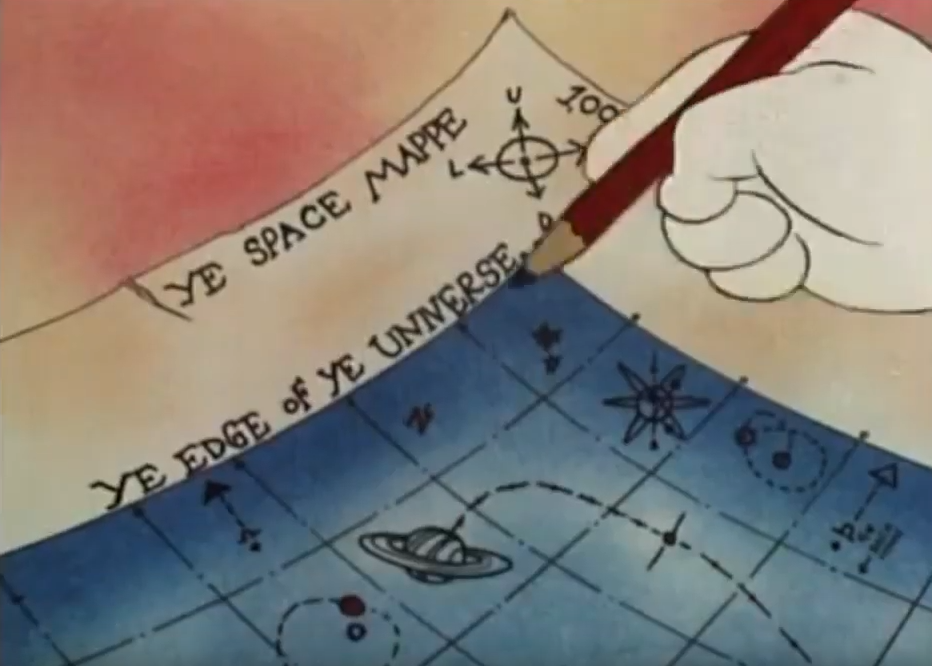British Kids’ TV Set in Space
16th Nov 2022
TV is such a big part of modern culture that it is hard to believe that it is still less than 100 years since it was launched in the UK. Since then, pretty much every generation has had its collection of iconic British kids’ TV shows, and some of them have been set in space.
Already, your brain is probably whirring as you remember the sort of television you used to watch when you were a youngster. You can usually rely on British TV to be quirky, and at the least interesting. With kids’ television shows, there is no exception. Let’s explore some of the out-of-this-world television shows through history.
Oh, and before we start our countdown, for the purposes of this we are not counting Doctor Who as kids’ TV. Children love it as much as adults, but as it isn’t specifically made for children, the show will just have to put up with being mentioned on every other list of the top space television shows.
Clangers
For a certain generation, any mention of British kids’ TV shows set in space will immediately make them think of Clangers (usually called “The Clangers”).
The stop-motion series is a beautiful example of the downright weirdness of British television.
The episodes follow a family of moon-dwelling creatures resembling mice, who speak in a sort of nasal whistle language. They exist on a diet of green soup that is farmed from a lake and given to them by the Soup Dragon, as well as the spaghetti-like meal of blue string pudding.
It has a charming absurdity and surprisingly cute protagonists, as well as the weird and wonderful peripheral characters. Clangers were originally on our televisions between 1969 and 1974, but the series was reprised in 2015, and joyfully still uses stop motion animation rather than computer animation.
The Clangers stem from a company called Smallfilms set up by the writer of the show, Oliver Postgate, and modelmaker and illustrator Peter Firmin.
SuperTed (and The Further Adventures of SuperTed)
SuperTed made history for a few different reasons, not least because it was one of the few successful kids’ TV exports of the time. It aired on The Disney Channel in the US and was actually the first animated show from Britain to be shown on the network.
It follows a teddy bear, SuperTed, who is originally deemed rejected as defective, but is given life (and superpowers) upon a chance meeting with an alien. The SuperTed books were popular first, before in 1983 he was animated for television.
The Further Adventures of SuperTed is worthy of mention, but this is actually an American-produced series that follows on from Ted’s original adventures.
SuperTed may even be back on our screens soon, with a new series in the works for 2023 release.
Aquila
Aquila was a weekly show that went out over two series in 1997 and 1998. It followed two young boys who found a spacecraft while out innocently playing one day. The original series was based on a book by British novelist Andrew Norriss. The second series was later novelised by the same author.
The show flits between home in the UK and numerous space adventures. It turns out that the craft has been made by the Yrrillians from the planet Deneb to serve as a life raft.
The show wasn’t as much of a smash hit as some of the others, but is remembered fondly by those growing up in the 1990s.
Bleep and Booster
A television show with five-minute episodes produced to be shown on Blue Peter, this follows a pair of space-travellers and was made using “animatic animation”. In spite of the very basic animation style, the show was popular among those who grew up in the 1960s and some episodes were even released on VHS in the 1990s.
Along with the slow-moving pictures, the story is narrated, with all voices being performed by Peter Hawkins.
The concept of the show follows Bleep from planet Miron/Myron and Booster, a young human who goes with him on a variety of missions. Miron/Myron is made mainly out of chrome and its citizens look a lot like robots, with third eyes.
DoDo, The Kid from Outer Space
There was a real buzz around science fiction television shows for kids in the 1960s, and Dodo, The Kid from outer Space ran for five years with 78 episodes broadcast. DoDo is a humanoid alien from the fictional planet Hena Hydro, who enjoys a number of adventures in his flying saucer, with company from other characters like Compy the Computer Bird.
The show focused on a lot of the technological advancements that were happening at the time and helped to fuel a passion for science fiction in the younger generation during the 1960s.
Fantastic Max
Fantastic Max is a lesser-known show that follows a young boy called Maxwell, who goes on space adventures with his two toys. One is called FX, an alien toy with a pull-string, who comes from the planet Twinkle-Twinkle, and A.B. Sitter, an android that has been brought to life by FX, and bears striking and often suspicious resemblance to Star Wars character C-3PO.
The show had both UK and US involvement and one of the most notable things about it was the involvement of animation superstar Nancy Cartwright who would go on to voice Bart Simpson.
The Telebugs
The Telebugs was on television in the UK for a brief stint in the 1980s, but in that time over 80 episodes were broadcast. The show’s cast included the voice of Ron Moody, famous for playing Fagin in Oliver!
The Telebugs are worthy of their place on the list for the memorable, and not at all forced acronym names of the robots: C.H.I.P. (Coordinated Hexadecimal Information Processor), S.A.M.A.N.T.H.A. (Solar Activated Micro Automated Non-inTerference Hearing Apparatus) and B.U.G. (Binary Unmanned Gamma camera).
Those aren’t even the strangest character names, as the robots were inventions of the cruelly-nicknamed “Pwofessor Bwainstwain” whose actual name is Professor Brainstrain, but a speech impediment leads to him being teased.
The Telebugs may not be as memorable as some other kids television set in space, but it certainly is right up there in the bizarre stakes.
Thunderbirds
Thunderbirds may have originally only aired for two series, but it has gone on to become one of the most famous British Kids’ TV shows of all time.
The brainchild of Gerry Anderson, the show had much longer episodes than many of the others on this list, and pioneered “Supermarionation” puppetry. The show was a sensation and the Blue Peter episode showing how to make a replica of their home at Stacy Island is remembered to this day.
Thunderbirds has seen many reboots and sequels, and creator Gerry Anderson’s company has gone on to create many more shows in this same Supermarionation style. In fact, Thunderbirds came after Anderson’s other shows made this way, including Stingray and Supercar.
The “International Rescue” protagonists are an organisation that are tasked with life-saving missions around earth and beyond. The main characters are Jeff Tracy and his adult sons (hence Tracy Island being their home). They pilot the Thunderbird Machines which also became popular toys in the UK.
Anderson’s legacy to British television is massive, and Thunderbirds may be the height of his success.
Captain Scarlet and the Mysterons
Another Gerry Anderson show, that feels intertwined with Thunderbirds, is Captain Scarlet and the Mysterons Using the same animation techniques, the show is another smash hit, first broadcast on ITV.
Set (at the time) 100 years in the future the adventures of the captain follow a war between earth and a race of Martians called the Mysterons. After a misunderstanding, humans happen to attack their home city (big mistake) and the Mysterons go searching for vengeance.
Captain Scarlet is a Spectrum agent with some Bond vibes, and early in the series acquires a very handy self-healing power “retrometabolism” to allow himself to become a crash test dummy in the fight with the Mysterons.
Fireball XL5
Continuing the Gerry and Sylvia Anderson monopoly, you’re probably seeing a pattern in their work by now. Fireball wasn’t as well known as some of the other Anderson shows, but it is worthy of mention.
Set in the year 2062, the series is set on board spaceship Fireball XL5 and follows the “World Space Patrol” and its crew on a variety of adventures. A lot of people remember the catchphrase of robotic co-pilot Robert, “ON OUR WAY ‘OME!“
Summary on British kids’ TV shows
Going down the rabbit hole of British kids’ TV shows, especially those set in space, will either take you on a huge nostalgia trip, or leave you asking questions about the absurdity of some of the productions.
Many of these shows played a huge part in the advancement of animation, and though the 1960s obsession with space shows has died down somewhat, there are still some incredibly influential UK shows being made today.



Thank you for your comment! It will be visible on the site after moderation.